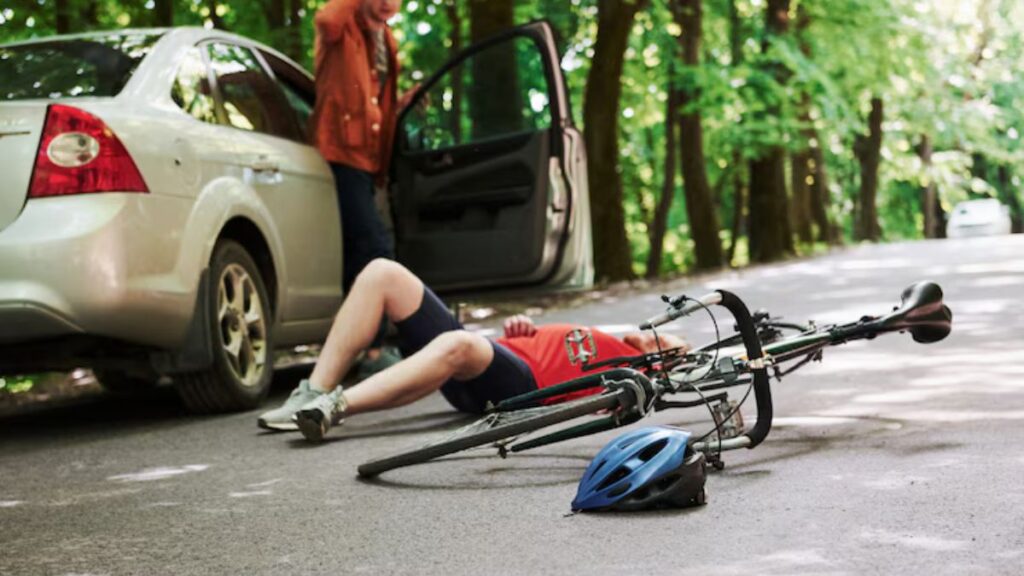Bicycle accident case often leave victims with serious injuries, mounting medical bills, and unanswered questions. But one of the most pressing questions is: Who can be held responsible? The answer isn’t always as straightforward as pointing to the driver who hit you. Multiple parties could share liability—from negligent motorists to government agencies that failed to maintain safe road conditions.
In Riverside, bicycle accidents are an unfortunate reality, with busy streets and distracted driving contributing to collisions. California’s strict liability laws mean that even if a cyclist is partially at fault, they may still recover damages—but proving negligence requires skill. If you’ve been injured, read on to learn from an experienced Riverside bicycle accident attorney about the key parties that could be held accountable. The truth might change how you see your case.
Who Can Be Held Liable in a Bicycle Accident Case?
When a bicycle accident occurs, determining liability is crucial for securing fair compensation. Unlike some personal injury cases, bicycle collisions often involve multiple at-fault parties, each contributing to the crash in different ways. Below, we explore the most common entities that may be held responsible under California law.
1. Negligent Drivers
The most obvious liable party in a bicycle accident is the motorist who caused the crash. Under California Vehicle Code § 21200, cyclists have the same rights and responsibilities as drivers, meaning motorists must share the road safely. Common driver negligence includes:
- Distracted driving (e.g., texting, per VC § 23123.5)
- Failure to yield (e.g., right-of-way violations, per VC § 21804)
- Drunk driving (per VC § 23152)
- Dooring accidents (opening a car door into a cyclist’s path, per VC § 22517)
California follows comparative negligence (Civil Code § 1714), meaning a cyclist’s own fault (e.g., running a stop sign) may reduce their compensation but won’t necessarily bar recovery.
2. Government Entities (for Poor Road Conditions)
If hazardous road design or maintenance contributed to the crash, a city, county, or state agency could be liable. Common issues include:
- Potholes or uneven pavement
- Missing or faded bike lane markings
- Malfunctioning traffic signals
- Inadequate signage
Under California Government Code § 835, public entities can be sued if a dangerous condition caused the injury—but strict notice requirements apply. Victims typically must file a claim within six months (per GC § 911.2).
3. Bicycle or Parts Manufacturers
If a defective bike component (e.g., faulty brakes, a broken chain, or a defective helmet) contributed to the crash, the manufacturer or distributor could face liability under:
- Strict product liability (Civil Code § 1714.45)
- Breach of warranty
- Negligence in design or manufacturing
A successful claim requires proving the defect existed before the accident and directly caused the injuries.
4. Employers (for At-Work Drivers)
If the at-fault driver was working at the time of the crash (e.g., a delivery driver or truck operator), their employer could be held vicariously liable under respondeat superior principles. Even if the driver acted negligently, the company may bear responsibility.
5. Property Owners (for Hazardous Conditions)
Private property owners may be liable if their actions (or inaction) contributed to the accident. Examples include:
- A business allowing parked cars to block bike lanes
- A homeowner failing to trim foliage obscuring traffic signs
- A construction company leaving debris in the roadway
Premises liability laws (under Civil Code § 1714) may apply if the hazard is foreseeable and preventable.
Key Takeaway
Bicycle accident claims are rarely straightforward. Liability can extend beyond just the driver who hit you—government agencies, employers, manufacturers, and property owners may also share the blame. Since California’s laws impose strict deadlines and procedural hurdles, consulting a legal professional early can make the difference between a denied claim and full compensation.
If you’ve been injured, understanding who can be held responsible is the first step toward justice. The right evidence and legal strategy can uncover liability in places you might not expect.







